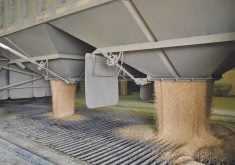A heifer calf born as a twin to a bull calf has only a one in 10 chance of growing up normal and fertile. Ninety percent of the time, she will be born a freemartin, unable to conceive.
Freemartinism is only seen when a cow bears twins. It all begins with a double ovulation – the simultaneous release of two eggs from the ovaries. There is a greater chance of this occurring in cows bred early in lactation (less than 60 days after calving), but some genetic lines of cattle are also known for their higher twinning rates.
Once the two eggs are fertilized in the fallopian tubes, they are propelled by contractions from the tubes to the uterus, where they start to grow.
By four weeks gestation, each embryo has a well developed placenta, and because they have met and fused, the two are already sharing blood circulation.
If the twins are the same sex, the calves develop normally and there is no possibility of either being a freemartin. However, if the twins are of opposite sexes, problems arise.
Sexual differentiation occurs earlier in the male fetus than in the female fetus. This means that his reproductive organs are the first to form.
This also means that some of his cells, which contain different chromosomes than his female twin, can cross over to her placenta.
These cells migrate and start growing throughout her body, producing male hormones and inhibiting the development of her ovaries and genital tract.
If the circumstances are right, a freemartin can be born a singleton. In these cases, a twin pregnancy existed but the male died after reaching 30 days gestation.
Even though he is gone, his cells have already transferred over to the female and are having their effect.
Most freemartins are diagnosed during routine palpations of heifers at breeding age. Compared to a normal heifer, a freemartin’s ovaries are extremely small and her uterus is shrunken or even absent. The ovaries show no evidence of cycling activity.
Freemartins can physically resemble a steer in appearance with their underdeveloped udders and teats. The vulva also looksnormal but there can be a tuft of hair and a prominent clitoris.
A simple test to determine if a heifer is a freemartin is to insert a test tube into her vulva. In a normal young heifer calf, the tube can be inserted about 18 centimetres. In a freemartin heifer, it only goes in half that because the vagina “dead ends.”
Laboratory tests can also be done on hair or blood samples to look for male chromosomes in the cells. Unfortunately, this test is expensive and not widely available.
A heifer born twin to a bull calf should be noted in the herd data or identified by marking her ear tag. This way the producer is reminded to test her before time and money is invested into developing her as a replacement heifer that is unlikely to join the breeding herd. It may also help the producer avoid the mistake of selling a possible freemartin as a potential replacement heifer to an unsuspecting buyer.
The term freemartin is said to have originated in England. It referred to a heifer that was not pregnant after the summer breeding season. She was therefore “free” for fattening and slaughter at Martinmas, a fall festival in honour of St. Martin.














